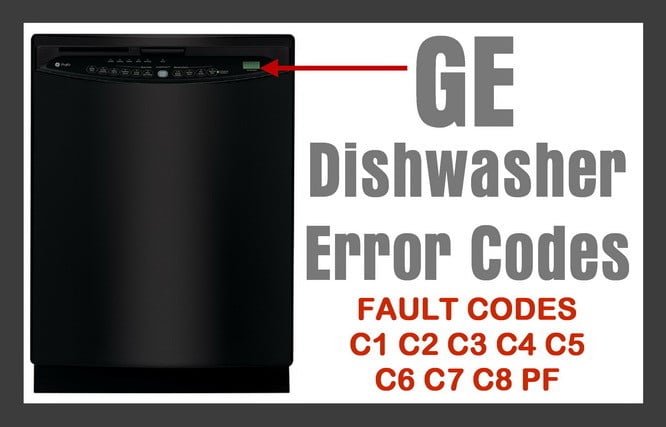
Let’s break it down simply. An error code E3 is like your dishwasher’s way of waving a little red flag that says, “I need help!” Specifically, this code typically indicates a problem with the dishwasher’s heating element or the water temperature. It’s as if your dishwasher is politely informing you that it’s having trouble getting hot water to clean your dishes effectively. Understanding this can give you a head start on getting things back to normal. So, let’s dig a bit deeper into the common causes of this pesky error and how you might tackle them.
Understanding the Role of the Heating Element
The heating element in a dishwasher is sort of like the engine in your car. If it’s not working, you’re not going anywhere. This component is responsible for heating the water to the right temperature for cleaning and sanitizing your dishes. When the heating element isn’t functioning correctly, your dishwasher might throw the E3 code as a distress signal.
Imagine trying to wash oily dishes with cold water — it just doesn’t do the trick. The heating element needs to raise the water temperature to ensure all those greasy leftovers are washed away. If the heating element is faulty or damaged, it can’t heat the water properly, resulting in the E3 code. It’s like having a pot on the stove that just won’t get hot enough to cook your pasta. To fix this, you might need to check if there’s any visible damage or if it has burned out. If you’re feeling adventurous, you can use a multimeter to test the element for continuity, which is a fancy way of saying “checking if electricity can flow through it.”
Before you rush off to the store to replace parts, try resetting your dishwasher. Sometimes, just like a computer with a glitch, a simple power cycle can help. Turn it off, wait a few minutes, and turn it back on. If the code returns, you might have a genuine issue that needs more attention.
The Importance of Proper Water Temperature
Hot water is the lifeblood of a dishwasher. Without it, cleaning dishes effectively becomes nearly impossible. Your GE dishwasher expects a certain water temperature to function correctly — typically around 120°F to 140°F. If the incoming water doesn’t meet this requirement, you’ll see that E3 code staring back at you.
Think of it like trying to wash clothes in cold water when the detergent is formulated for hot water — it just doesn’t quite work as well. There could be several reasons your water isn’t hot enough. The most common culprit is a problem with your home’s water heater. If it’s not set high enough or if it’s malfunctioning, the water entering your dishwasher may be too cold, triggering that error code.
To troubleshoot, check your water heater’s settings and ensure it’s adequately heating water. If other appliances in your home are struggling with hot water, your water heater might need a check-up. On the other hand, if only the dishwasher is affected, it might be an issue more localized to the appliance itself. Adjusting the heater settings or consulting a professional could resolve the issue.
Troubles with the Thermostat
Your dishwasher’s thermostat is like its internal thermometer. It keeps track of the water temperature to ensure it’s just right for cleaning. If the thermostat isn’t working correctly, it can’t accurately measure the water temperature, leading to the E3 error code.
Imagine trying to bake a cake without knowing the oven temperature — it’s a recipe for disaster. Similarly, an inaccurate thermostat can confuse your dishwasher, making it believe the water is at the right temperature when it’s not. This miscommunication can result in less effective cleaning or the dreaded E3 error.
If you suspect a faulty thermostat, you might need to replace it. This process usually involves removing the old thermostat and installing a new one, which can be done with a basic understanding of your dishwasher model and some handy DIY skills. If this sounds too technical, you might want to contact a professional for help. They can quickly identify if the thermostat is the root cause and get your dishwasher back in working order.
Preventative Measures and Final Thoughts
Wouldn’t it be nice to avoid this error code altogether? Thankfully, there are a few preventative measures you can take to keep your GE dishwasher running smoothly. Regular maintenance and a little bit of attention can do wonders.
Start by running your dishwasher with a cleaner or vinegar cycle every few months. This helps remove any mineral build-up that might interfere with its components, including the heating element and thermostat. Also, always ensure your water heater is functioning correctly and set to the right temperature. Regularly check your dishwasher’s components if you notice any strange noises or if it’s not performing as well as it used to.
In summary, while the E3 error code can be a hassle, understanding its causes can lead to quick resolutions. Whether it’s the heating element, water temperature, or thermostat, tackling these issues can bring your dishwasher back to life. Remember, a bit of preventive care can go a long way in keeping future E3 codes at bay. So, next time your appliance starts blinking, you’ll know just what to do!